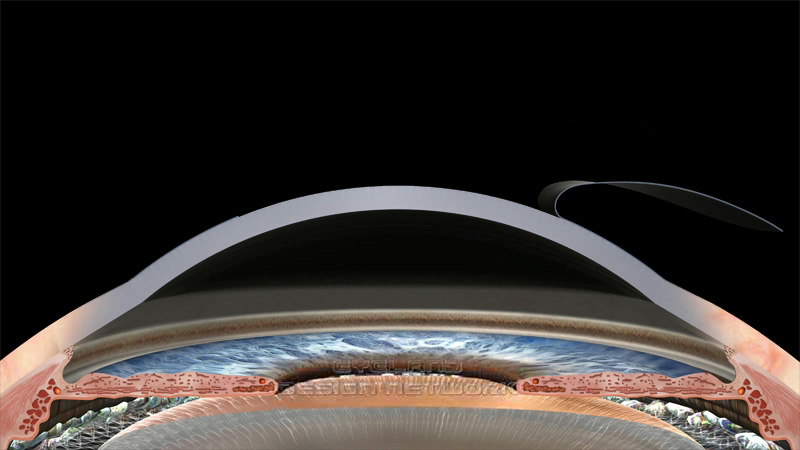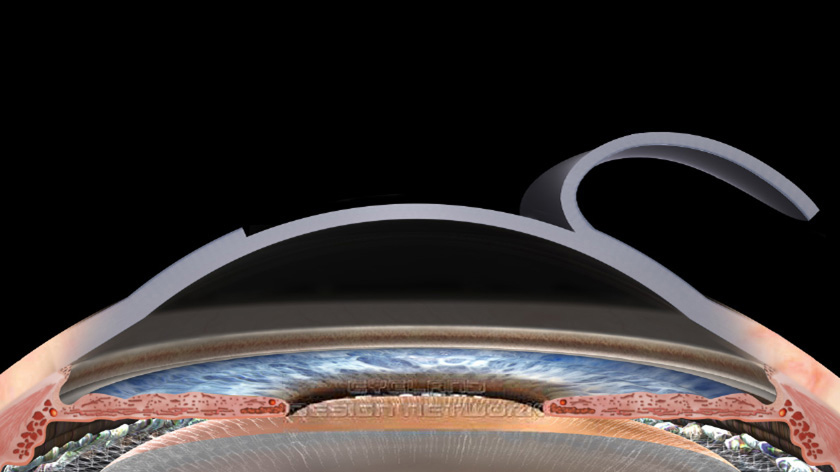Exploring Laser Vision Correction – SBK
Surface Ablation and LASIK
All modern laser vision correction procedures use an excimer laser to reshape the cornea and correct vision. All excimer lasers, approved by the FDA, regardless of their manufacturer, output 193 nanometer light for corneal ablation. The unique ability of the excimer laser to reshape corneal tissue is the breakthrough that ignited modern refractive surgery.
Laser Vision Correction is performed with or without a corneal flap.
Surface Ablation (no flap)
- Epi-LASIK (and PRK) exposes the most superficial layer of the corneal stroma to excimer sculpting. (The illustration below shows an elevated wisp of superficial corneal epithelial cells only. This is not a true flap.) The reshaped cornea maintains maximal strength and structural integrity. The vast majority of the corneal anatomy remains untouched.
- Other surface ablation techniques like PRK (photorefractive keratoplasty), LASEK (laser assisted epithelial keratomileusis), and transepithelial ablation use alternative methods to expose that same superficial corneal stroma layer prior to excimer application.

LASIK (flap)
- Flaps are constructed using either a mechanical microkeratome or a femtosecond laser. Regardless of the instrumentation, a thin flap corneal flap, measuring approximately 100 microns in thickness, is created. The excimer laser is then applied to the corneal stromal tissue under this flap.
- While modern mechanical microkeratome are excellent, the femtosecond laser (Z4) has become our preferred technique for flap creation. This is commonly called All-Laser LASIK or Bladeless LASIK.

The advantages of LASIK over surface ablation are speed of recovery, convenience, and comfort. Our LASIK patients can almost always drive without glasses to their follow-up appointment. LASIK patients can return to full activities, with clear vision, in hours.
The Ziemer Z4 enables near perfect flap positioning, exact control of flap thickness, maximization of the flap diameter, customization of the flap shape, and selection of the hinge location. This enhances safety, maximizes corneal stability, optimizes visual quality, and reduces dry eye.
Over the course of his career, Dr. Lewis has established a reputation as a leading LASIK, Epi-LASIK, and PRK Philadelphia specialist. For patients who wish to reduce their dependence on glasses but cannot undergo corneal surgery or prefer a reversible alternative, Dr. Lewis offers the EVO Visian ICL.

